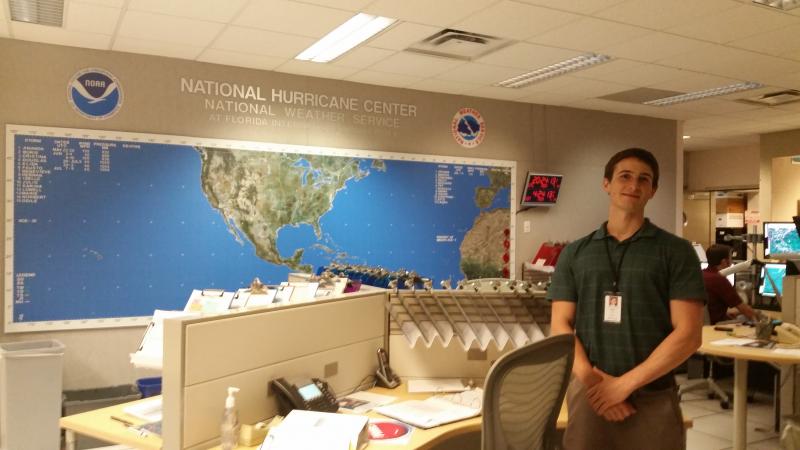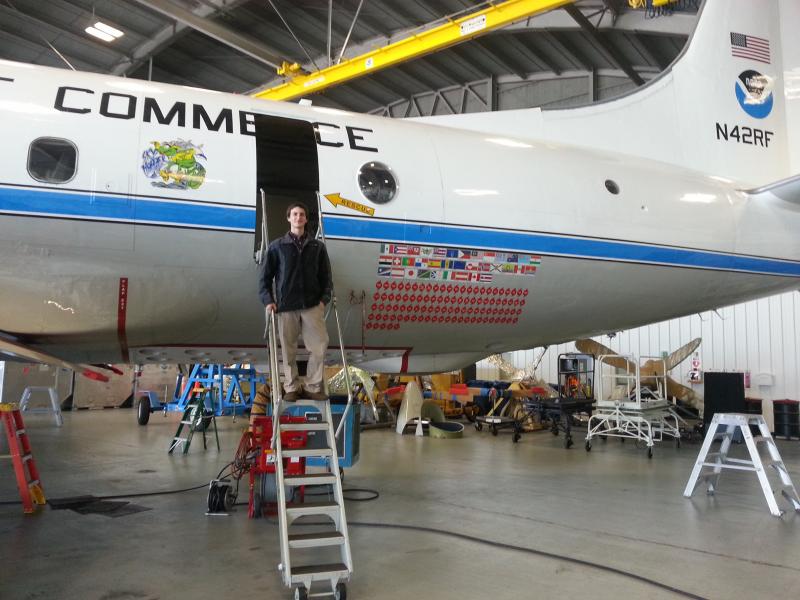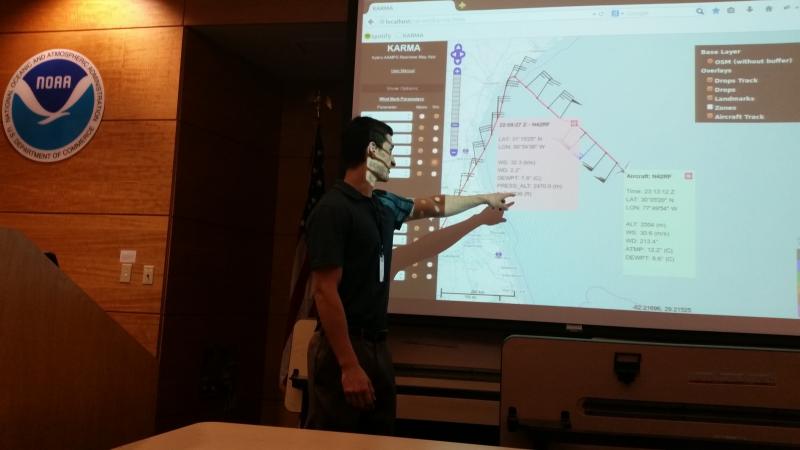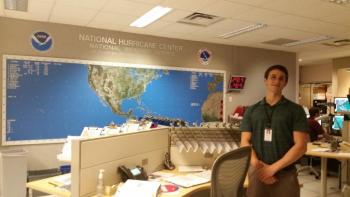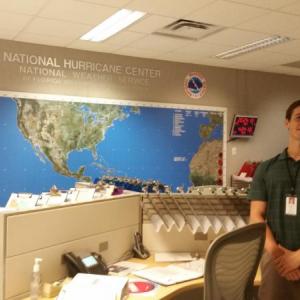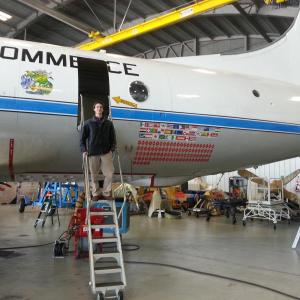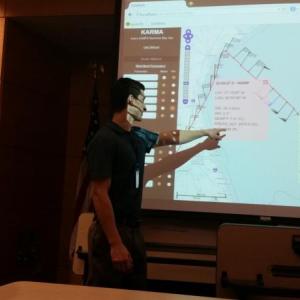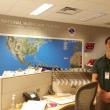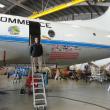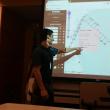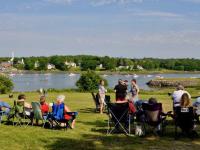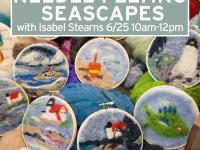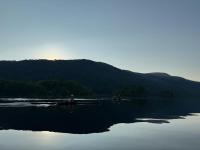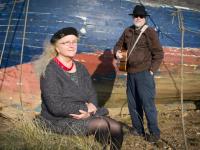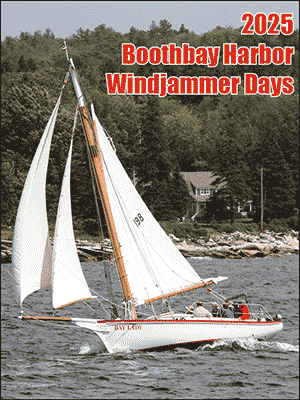Camden Hills graduate builds app used by Hurricane Hunters tracking Matthew
Hurricane Hunters, those trained pilots who fly investigatory missions directly into eyewalls to help forecast hurricane intensity and tracking, have been hard at work over the last week with Matthew. And helping them is software that was created, in part, by 2011 Camden Hills Regional High School graduate Kyle Nolan.
The National Oceanic and Atmospheric Administration Hurricane Hunters use special aircraft to help forecasters and scientists gather data to predict environmental changes and support coastal and marine research. They work under the Aircraft Operations Center (AOC) on MacDill Air Force Base in Tampa, Florida. When a hurricane looms, the Hurricane Hunters conduct flight missions through the eyewall. Onboard scientists and meteorologists use an array of sensing platforms to collect data that helps forecasting and modeling centers predict storm track and intensity.
Nolan, who graduated from UMaine in 2015 with a computer engineering degree, developed an on-aircraft software tool that has improved the way the Hurricane Hunters conduct their flight missions.
In 2014, Kyle Nolan worked as a software engineering intern for the Hurricane Hunters via the NOAA Hollings Scholarship program.
The full-stack software solution he designed and developed over nine weeks currently helps task-saturated AOC flight crews make better, faster decisions in the air.
At the start of his internship, Flight Director Ian Sears challenged Kyle to create an application that integrates with existing aircraft systems and brings real-time data to the attention of AOC scientists.
This was an ambitious goal for just a nine-week internship, but he delivered a full, feature-complete product just in time for the August Hollings presentations at NOAA headquarters.
Nolan’s AAMPS Real-time Map App (KARMA) hows the aircraft's georectified flight path overlaid with a variety of radar and atmospheric data. The application keeps a full history of the measurements taken by dozens of on-board sensing platforms, and it displays the real-time data to atmospheric scientists in a graphical and intuitive way. This includes wind speed, dew point, temperature, and pressure, among myriad other parameters.
NOAA scientists lacked a tool that could visualize both the flight path and the data they were collecting prior to this innovation. To make informed decisions in the air, flight directors had to manually correlate information from multiple terminals around the aircraft, some of which only displayed current parameter values.
Nolan’s mentor, Flight Director Ian Sears, devised the project requirements with the hope that someday, either an in-house application or a commercial product would be able to address the need.
The application is now in full use on Hurricane Hunter flight missions, and has already helped Ian Sears make quicker, more optimal choices about where to direct the aircraft to collect the best hurricane data. During a conversation with Ian in September, after his Hurricane Hermine flights, Ian lauded the impact that KARMA has had on their missions. He mentioned a specific example of how he recently used the application to identify a particular weather cell in advance, and adjust the flight pattern accordingly.
Kyle's initial implementation chiefly benefits the scientists onboard Hurricane Hunter aircraft; but it was also designed to be extensible, and he left documentation regarding two specific expansions.
1. The Hurricane Hunters plan to leverage existing feeds to stream KARMA data in near real-time from their aircraft to the Hurricane Research Division. This will enable forecasters to visualize hurricane data as it is still being collected.
2. If NOAA approves it, a version of KARMA may also be made available to the general public as a web application. Those interested in real-time weather details would be able to see live Hurricane Hunter flight paths and instrument readings.
Hurricane Hunters will be flying aircraft straight through the eye of Matthew; and KARMA will be one of the primary applications flight directors use to make safe, well-informed decisions in the air. In other words, their missions will be guided by the software solution of an avid Maine fisherman who grew up listening to NOAA forecasts on Penobscot Bay.
Nolan currently lives in Somerville, Mass., where he works for the MITRE Corporation as a cyber infrastructure engineer on various technical projects that support the Department of Defense.
He often returns to Maine as time allows, primarily to fish and to be with friends and family. He remembers his internship with NOAA as a watershed event where his mentor handed him a high-level project description and allowed him to break down the task and run with it.
At the close of the summer Hollings internships, each student is required to present their results at an adjudicated science symposium in Silver Spring, Maryland.
Nolan enjoyed the judges' softball question – "You did all of that in just nine weeks?". He received an Outstanding Presentation Award, out of the 100+ Hollings Sholars in August, 2014.
The Hollings's Scholarship may provide up to $9,500 a year for the Junior and Senior years of college; however, the deadline is early – mid January, and it has to be applied for during the student's sophomore year.
Scholarship Information
Over the past 10 years, the Hollings Scholarship Program has provided an average of 118 undergraduate students per year with tuition support and paid summer internships with NOAA across the country. Hollings has a growing network of over 1,200 alumni from over 300 universities. Approximately 75 percent of Hollings Alumni continue on to graduate school in NOAA mission fields.
The Hollings Scholarship Program provides successful undergraduate applicants with awards that include academic assistance (up to $9,500 per year) for two years of full-time study during the 9-month academic year and a 10-week, full-time internship position ($700/week) during the summer at a NOAA facility.
The internship between the first and second years of the award provides the Scholars with hands-on, practical experience in NOAA-related science, research, technology, policy, management, and education activities. Awards also include travel funds to attend a mandatory NOAA Scholarship Program orientation, scientific conferences where students may present a paper or poster, and a housing subsidy for scholars who do not reside at home during the summer internship.
Hollings Alumni report that the experience influenced their academic and career paths, expanded their professional networks and improved their skills for working in NOAA mission fields.
100 percent of Hollings Scholars surveyed said that they would recommend this opportunity to other students.
The National Oceanic and Atmospheric Administration (NOAA) Ernest F. Hollings (Hollings) scholarship program is designed to:
increase undergraduate training in oceanic and atmospheric science, research, technology, and education and foster multidisciplinary training opportunities;
increase public understanding and support for stewardship of the ocean and atmosphere and improve environmental literacy;
recruit and prepare students for public service careers with NOAA and other natural resource and science agencies at the federal, state and local levels of government; and recruit and prepare students for careers as teachers and educators in oceanic and atmospheric science and to improve scientific and environmental education in the United States.
Related links
Event Date
Address
United States

